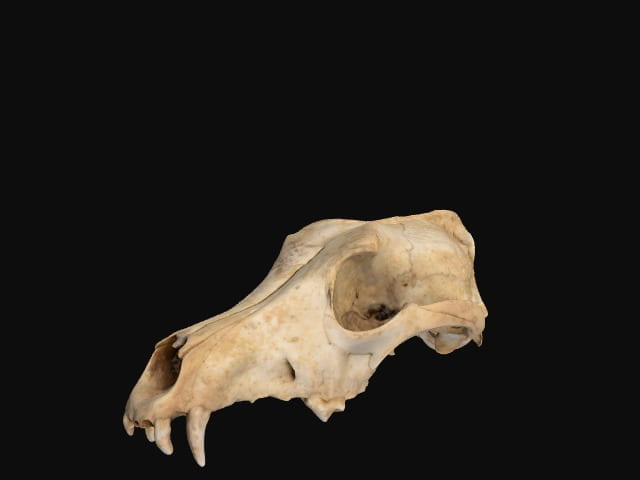The digitisation of artefacts and archaeological objects has been an increasing practice at UNE in recent years, and the advent of COVID has only increased efforts to digitise teaching and research materials. While there seems to be a new focus on 3D modelling at UNE, the discipline of archaeology has been creating and using 3D models in teaching and research since 2017!
Dr Melanie Fillios, Associate Professor in Archaeology at UNE with a specialty in human and animal bone, discussed some of the fantastic benefits of using 3D models of bones for teaching and research.
To meet the needs of an online and on-campus cohort, Dr Fillios designed the unit Zooarchaeology – ARPA309/509. This unit was created around the use of 3D models as a key teaching resource at a time when a dual-mode university class was less ubiquitous. Coming into its fourth iteration, the experience has highlighted that learning online can be an equal, if not better, experience than traditional face to face learning.
“If you keep the learning outcomes in mind, you can tailor activities to reach the same goal,” said Dr Fillios when discussing the success of the Zooarchaeology unit. “We designed the whole unit around the learning outcomes, which in this case really focused on identification of species and/or element. These outcomes did not change with mode of study. The unit has been quite successful – it’s the biggest one in Australia.”
“Sydney University has used our materials. It is open access, which is something that I really want to stress, it is something I believe in.”
3D modelling for the purpose of research and teaching has come quite far since the digitisation projects began at UNE in 2016, and were first used in ARPA 309/509 in 2017. Dr Fillios notes that the purpose of the 3D models was initially, first and foremost, for teaching.
One of the most exciting and significant of the 3D projects is a fully modelled human skeleton, which is the only complete human skeleton 3D modelled to date.
The benefits of having access to this kind of technology is not only the ability to observe unique study resources from afar, but also the increased number of students that can access them in a learning environment. As Dr Fillios puts it:
“With a traditional lab class you are capped at 25 students, because you just don’t have that many materials and you can’t be in more than one place, but if you can put the same material online, then you can have 100 or 200 students. It’s really unlimited – you might need some assistance, but the materials are the same.”
While 3D modelling projects at UNE originally began with teaching in mind, they have also been invaluable research resources as well. One particular research venture that digital model technology proves useful for is in relation to Dr Fillios’ dingo research.
“We have funding from the Australia Pacific Science Foundation to look at variability in dingoes with a view to understanding where they came from and how many times they may have been introduced into Australia. With colleagues at the University of Sydney and UNSW we’ve collected dingo crania from the Nullarbor from several natural pit traps. Using a combination of photogrammetry, laser and CT scanning we are looking for fine differences in size that may provide clues to the sources of variability. We hope this will allow us to correlate morphological differences with diet, environment, and age and look at potential pathways into Australia.”
This research is a perfect example of the extent to which 3D scans of bones and artefacts can be utilised. Even research-based uses of 3D models, like Dr Fillios’ dingo crania project, can then be used in teaching:
“It’s first being used for research, but we will then use that data in teaching to teach students how to do geometric morphometrics. That’s one of the benefits of 3D modelling, you have something preserved forever. So if we want to sample bone for molecular analysis, for example DNA, or isotopes, or carbon dating – its destructive and once you destroy it… you’re not getting it back. You can try and use a part that doesn’t matter but that’s not always possible, and of course the less handling something gets the less likely it is to break”
Perhaps the most important aspect of 3D modelling projects at UNE lies in their ability to increase the equality of access for students and academics. Dr Fillios describes using and sharing models on UNE’s Pedestal 3D platform as an increase in ‘equality of access’. As Dr Fillios puts it: “that is the goal of what we’re trying to do at UNE and that’s the goal of online education. It shouldn’t be an inferior offering it should be just as good, if not better.”



Recent Comments